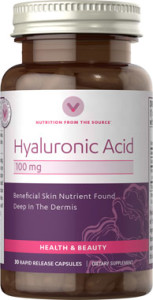There are several factors which are known to influence the levels of hyaluronic acid in the body. Some of these include genetics, environmental factors and dietary factors. Researchers have been studying hyaluronic acid for several years and have found some interesting facts. For instance, magnesium is needed for the synthesis of hyaluronic acid and may be one of the factors connected to the disorder. Supplementing magnesium is an established treatment in many of the symptoms of fibromyalgia, mitral valve prolapse and contractures.

Researchers have also found that ascorbic acid can degrade hyaluronic acid and estrogen treatment will increase the activity of hyaluronic acid. (3,4) In one particular study using rats researchers found that the concentration of hyaluronic acid in the skin was higher than normal when rats suffered an energy deficiency but below normal in the rats who had prolonged protein deficiency.
Doctors do know that hyaluronic acid is a component of the synovial fluid and also found in the vitreous humor of the eye, the synovium of the joints and in the subcutaneous tissue functions as an agent to cement other tissues together. When individuals suffer from osteoarthritis researchers have found changes in the hyaluronic acid found in the cartilage.
Another use that researchers and physicians have found for this substance is in the intra-articular injection in order to increase the visco elasticity of the synovial fluid. This therapy can be considered for individuals who have residual symptoms even in spite of traditional non-pharmacological and pharmacological treatments.
References:
(1) Annals of Medicine: Serum hyaluronan as a disease marker
http://www.ncbi.nlm.nih.gov/pubmed/8811168
(2) Lung: Cigarette smoke degrades hyaluronic acid
http://www.ncbi.nlm.nih.gov/pubmed/2512457
(3) Free Radical Research Communications: Hyaluronic Acid Degradation by Ascorbic Acid and Influence of Iron
http://www.ncbi.nlm.nih.gov/pubmed/3508446
(4) Clinical Interventions in Aging: Effect of Estrogens on Skin Aging and the Potential Role of SERMs
http://www.ncbi.nlm.nih.gov/pmc/articles/PMC2685269/
| Advertisement | |
 |
|


Leave a Reply